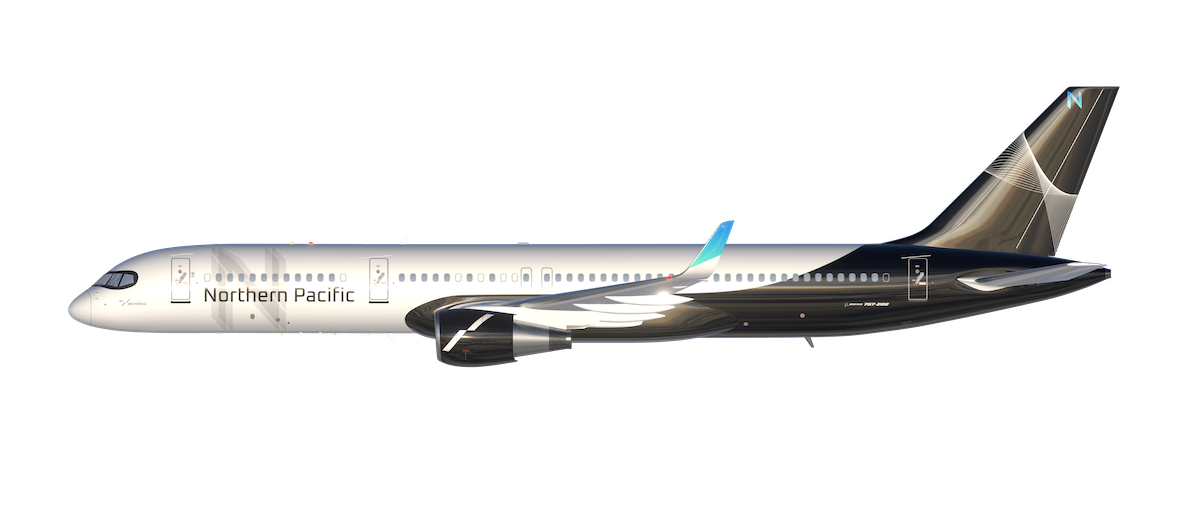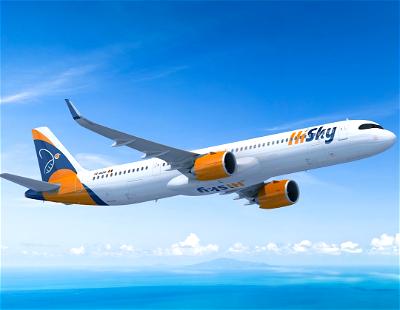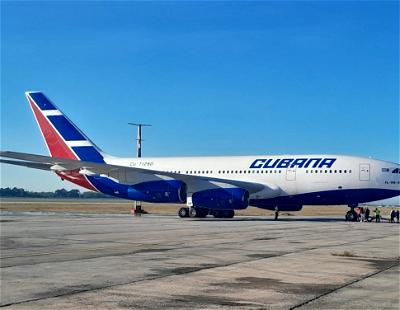Last week we learned how Northern Pacific Airways planned to commence operations under a wet lease agreement. We now have more details of what that will look like.
In this post:
The basics of Northern Pacific
The concept of Northern Pacific was first revealed in the summer of 2021. Here are the basics of the company:
- The people behind this airline are the same people behind Ravn, a regional airline in Alaska
- Northern Pacific plans to use Anchorage as a hub to connect various points in the United States with various points in Asia; think of it like the Pacific equivalent of Icelandair
- Northern Pacific plans to use Boeing 757s for this service, many of which have already been acquired
- Northern Pacific plans to launch operations in 2022
- Northern Pacific has huge growth plans, and intends to have 50 aircraft by 2026
I’ve gotta be honest, I find this to be a very odd business model. I’m sure the fixed cost structure is great (these 757s were probably acquired for next to nothing), but these planes have high operating costs, and economy airfare between the United States and Asia is already extremely low, so I’m not sure where the margins are for Northern Pacific, or where the demand is supposed to come from.
You can pretty consistently find economy fares of under $700 between most points in the United States and most points in Northern Asia, and that’s on top notch full service airlines. So can Northern Pacific really undercut on price much?
The only value I see here is for those who specifically want to have a stopover in Alaska when traveling between the lower 48 and Asia, but that doesn’t seem like enough reason to start an airline.

Northern Pacific will lease Icelandair 757s
Northern Pacific recently filed with the United States Department of Transportation (DOT) about its new plans for launching operations. The airline now plans to start service via a wet lease agreement, and then subsequently the airline will use its own Boeing 757s.
Specifically, it has now been revealed that Northern Pacific intends to launch operations with four wet leased Icelandair Boeing 757s. For those not familiar with wet lease agreements, this is when an airline leases an aircraft and crew, meaning it would be Icelandair pilots and flight attendants operating these flights.
The airline now plans to put tickets on sale as of June 2022, and launch flights as of the fall of 2022.
Why would Northern Pacific wet lease planes from Icelandair, even though the carrier already has its own Boeing 757s?
- It’s my understanding that Northern Pacific wasn’t initially planning on getting ETOPS certification for its Boeing 757s, since this wouldn’t have been needed given all the diversion points between Alaska and most of Asia (ETOPS certification is needed when flying over large bodies of water with no diversion points)
- However, with Russian airspace now being closed to US airlines, Northern Pacific would need ETOPS certification, which is quite a process
- So for the time being Northern Pacific plans to lease planes to launch operations; while Icelandair also has 757s, these planes are ETOPS certified
This one’s a head-scratcher for me. The economics of Northern Pacific seem questionable, and that’s not even factoring in that a wet lease agreement would considerably increase Northern Pacific’s costs. After all, Icelandair has to make a profit on the deal, and then Northern Pacific is left with the risk.

Bottom line
Alaskan airline startup Northern Pacific now intends to launch operations with wet leased aircraft. Specifically, the airline will lease four Icelandair Boeing 757s. This is allegedly due to challenges associated with Russian airspace being closed to US airlines, meaning Northern Pacific will need ETOPS certification for its Boeing 757s to cross the Pacific.
Northern Pacific’s business model was questionable even before these latest challenges, but between the Russian airspace situation and the plans to wet lease planes, I have even more questions.
What do you make of these Northern Pacific updates?





Ben, your point on ETOPS is a valid one. However, ETOPS operations require a triple certification: the airline, the pilots and the plane. Therefore, in addition to the certified plane they also need certified pilots and, for a newly created airline most difficult, a certificate at airline level.
As far as I know, the airline level certificate requires an extended period of flying.
The prices from Asian to the US are much higher than $700 return. The cheapest you can get a return flight from Tokyo to Seattle (I picked a random US city and did a calendar search) is $1,400 and is via Honululu.
The business model works - they won’t struggle to find plane-loads of people from Asia who would be very happy to visit the US, on a US airline, for $100-$200 less than anyone else is charging. Even if they get nickel-and-dimed all the way, in a seat a 12yo would struggle to fit into.
Best of luck with your ridiculous, and overly racist, prediction!
Au contraire, my doubtful friend, it’s not racist at all. It’s the same business model as Spirit, Ryanair, and AirAsia. My point is that the population of Asia outnumbers the US by around 10-1, and most of the comments here seem to be considering it from a US-centric perspective. The market is for ex-Asia trips, not ex-US trips, and the market is both huge and underserved. One-stop journeys to a wide range of US states,...
Au contraire, my doubtful friend, it’s not racist at all. It’s the same business model as Spirit, Ryanair, and AirAsia. My point is that the population of Asia outnumbers the US by around 10-1, and most of the comments here seem to be considering it from a US-centric perspective. The market is for ex-Asia trips, not ex-US trips, and the market is both huge and underserved. One-stop journeys to a wide range of US states, from a convenient 2nd/3rd tier Asian city, will be hugely attractive to the growing Asian middle class, who will also appreciate the opportunity to save cash on the ticket price so they can buy extra cowboy hats and tacky aircraft-carrier-themed mugs with “90,000 tons of diplomacy” written on them
I think Northern Pacific may be profitable at least in Korean market.
Ben mentioned economy flight between the US and Japan on a top notch airline costs only $700, but it's totally different when you search flights between the US and Korea now.
Business travel and tourism took a large part of Japanese air travel demand, however, it's been the opposite in Korea. The air travel demand between the US and Korea consists mostly...
I think Northern Pacific may be profitable at least in Korean market.
Ben mentioned economy flight between the US and Japan on a top notch airline costs only $700, but it's totally different when you search flights between the US and Korea now.
Business travel and tourism took a large part of Japanese air travel demand, however, it's been the opposite in Korea. The air travel demand between the US and Korea consists mostly of Korean expats visiting families and Korean students studying in the US.
Since Korea has reopened to the fully-vaccinated and boostered, the US-Korea travel demand has soared and an economy ticket betwen the US and Korea costs even higher than $2,000 now!
Japan's still closed and GMP-HND has been suspended since March 2020, so it's not an option for Koreans to take a layover. Most tickets connecting in NRT or HND are actually invalid because of Japan's strict entry requirements.
China's closed like North Korea, and Cathay Pacific from Hong Kong is almost dead and they fly like once a week out of ICN.
Eva Air and China Airlines are not any different from Cathay.
A lot of Koreans are even flying Qatar, Emirates or Etihad to fly from the East Coast to Korea simply because there's no other option in their budget! Those ME3 sell a round trip ticket around $1,000-1,400, which is still a lot cheaper than KE, OZ, UA, AA, DL.
If Northern Pacific can sell their flights around $1,000, I'm sure they'll be fully booked with Koreans. It is guaranteed until China, Taiwan and Hong Kong fully reopen and their airline operations are back to normal, which will take at least a couple years.
Props to them for keeping up the illusion they have a real business model.
Will be interesting to see how they continue the illusion all the way into bankruptcy.
I think that the only nice thing going so far is the airlines livery :)
I want a model of that.
Maybe Airbahn can provide feed from second tier cities in the lower 48 with their Bus and the 757s can focus on Asian missions LOL.
Seriously, the 'Alaska Stopover' concept is clever but what about the winter months? I love the area, but having spent many a winter night in ANC there isn't much to do other than drink lol. When the sun barely comes up at 1100 and is down by 1300 it hampers outdoor activities.
Just slightly hyperbolic with the sun times there bud...December 21 Anchorage sunrise at 10:13am and sunset at 3:41pm
I'm also thinking this is going to be a focus on second tier cities which are served with a single easy connection in ANC. Otherwise, agreed, why bother? It's possible, though marginally, that the model could work when having connecting traffic from cities like Boise, Portland, Sacramento, Reno and other similar, especially to markets like Osaka and Sapporo that would otherwise require two connections. But given the use of a 757 from the U.S. to...
I'm also thinking this is going to be a focus on second tier cities which are served with a single easy connection in ANC. Otherwise, agreed, why bother? It's possible, though marginally, that the model could work when having connecting traffic from cities like Boise, Portland, Sacramento, Reno and other similar, especially to markets like Osaka and Sapporo that would otherwise require two connections. But given the use of a 757 from the U.S. to ANC, that seems unlikely. Might have been smarter using a 737 from the U.S. to ANC connecting to the 757 to Asia. In the end, if they choose to try and link LAX, SFO, or SEA to cities like Tokyo this will rank as the weirdest and worst business models ever. Unless they found a way to survive on $299 one way fares.
These routes won't last more than 60 days, if that. Good luck however.
Possibly the market is for travellers originating in underserved 2nd/3rd tier Asian cities (many of which will have populations in the millions) to random US locations, whilst undercutting the “big” carriers by a couple hundred bucks? Gong xi gong xi
Hadn't given this nascent airline a thought in quite a while, but the closure of Russian airspace must be very concerning to the people behind this. It was already a somewhat shaky (albeit interesting) concept. But, adding in the closure of Russian airspace does change the calculations in a bad way. For one thing, some of their routings will be adversely affected. Not by any means to the extent of Finnair or a United flight...
Hadn't given this nascent airline a thought in quite a while, but the closure of Russian airspace must be very concerning to the people behind this. It was already a somewhat shaky (albeit interesting) concept. But, adding in the closure of Russian airspace does change the calculations in a bad way. For one thing, some of their routings will be adversely affected. Not by any means to the extent of Finnair or a United flight to India, but these guys are depending on a pretty thin margin to make it. And having to ETOPS certify all of their aircraft also throws a monkey wrench into the works. Not to mention that tourism to Asia is only now slowly opening up and not widely. This won't be an airline chose by business people, so I just don't know how they make this work any time soon.
But is Baltia coming online soon?? :P
Fake airline, doing fake airline things.
Couldn’t you say that whatever Iceland Air’s business model is, that’s what these guys will be following also?
There is a certain amount of traffic that will connect for a lower fare, and add to that people who are eager to visit or do a mini-visit on an extended layover. That’s not how I prefer to get to Europe, so I don’t fly Iceland, and it’s not now I prefer to get to Asia, so...
Couldn’t you say that whatever Iceland Air’s business model is, that’s what these guys will be following also?
There is a certain amount of traffic that will connect for a lower fare, and add to that people who are eager to visit or do a mini-visit on an extended layover. That’s not how I prefer to get to Europe, so I don’t fly Iceland, and it’s not now I prefer to get to Asia, so I won’t be flying these guys. But it seems like it is a model that can be made to work with some segments of the market?
Or if you think about it a little longer, you realize that single stop airfares to Asia from the US are already very low, and their business model is fantasy.
Yep, it's the same model. I think the difference is that trans-Pacific fares tend to be low if you're willing to connect, and then add in the challenges with Russian airspace and Japanese border closures, you have more factors working against you as well.
I hope they succeed, but it'll be interesting to watch.
@ John -- It's the same idea, but there are some major differences. The most significant is that economy airfare between the United States and Asia is already consistently really low. For example, economy between the United States and Japan is pretty consistently available for under $700 on top notch airlines.
That doesn't really leave much room to undercut the competition, especially with 757s not being particularly fuel efficient. That's especially true when you consider...
@ John -- It's the same idea, but there are some major differences. The most significant is that economy airfare between the United States and Asia is already consistently really low. For example, economy between the United States and Japan is pretty consistently available for under $700 on top notch airlines.
That doesn't really leave much room to undercut the competition, especially with 757s not being particularly fuel efficient. That's especially true when you consider the distance potentially being covered. For example, New York to Anchorage to Seoul covers a distance of well over 7,100 miles one-way, while Icelandair is largely carrying passengers around 4,000 miles one-way.
Immigration!!! A bank of flights arriving and departing ANC... Should be fun!
I disagree. It's true that airfare between the US and Japan's really low, however, it's totally different when your final destination's South Korea.
Flights to Japan is cheap because their flights are empty due to Japan's strict entry requirement. But Korea has reopened to the fully vaccinated and boostered, and the travel demand of Koreans for visiting relatives and for studying abroad is huge.
Before COVID, connecting in China/Taiwan/Hong Kong was a really...
I disagree. It's true that airfare between the US and Japan's really low, however, it's totally different when your final destination's South Korea.
Flights to Japan is cheap because their flights are empty due to Japan's strict entry requirement. But Korea has reopened to the fully vaccinated and boostered, and the travel demand of Koreans for visiting relatives and for studying abroad is huge.
Before COVID, connecting in China/Taiwan/Hong Kong was a really cost effective option, however, they're all closed and Koreans don't have many options to travel across the pacific. Connecting in Japan also doesn't work because GMP-HND has been suspended since 2020, and overnight connection's also banned due to their travel restriction.
When you search for economy airfare between the US and South Korea, it's normally over $2,000 now. Many Korean expats in the East Coast even fly ME3 to the opposite direction, which costs around $1,000-1,400.
If Northern Pacific can sell the tickets around $1,000, I'm sure all their flights will be fully booked with Koreans.
Of course, most of them will rather fly FSCs from China/Taiwan/Hong Kong/Japan once they fully reopen and their airline operation's back to normal, however, it'll take at least a couple years. Until then, Northern Pacific may be a great option for Koreans.
And yet all the bought-and-paid-for bloggers from TPG to others were flown first-class a few months ago to a big Northern Pacific launch event in California. I doubt this airline will ever see a flight for booking become available.
They basically are a PR office for airlines and loyalty programs. Same reason why I do not like a certain youtuber named Sam Chui